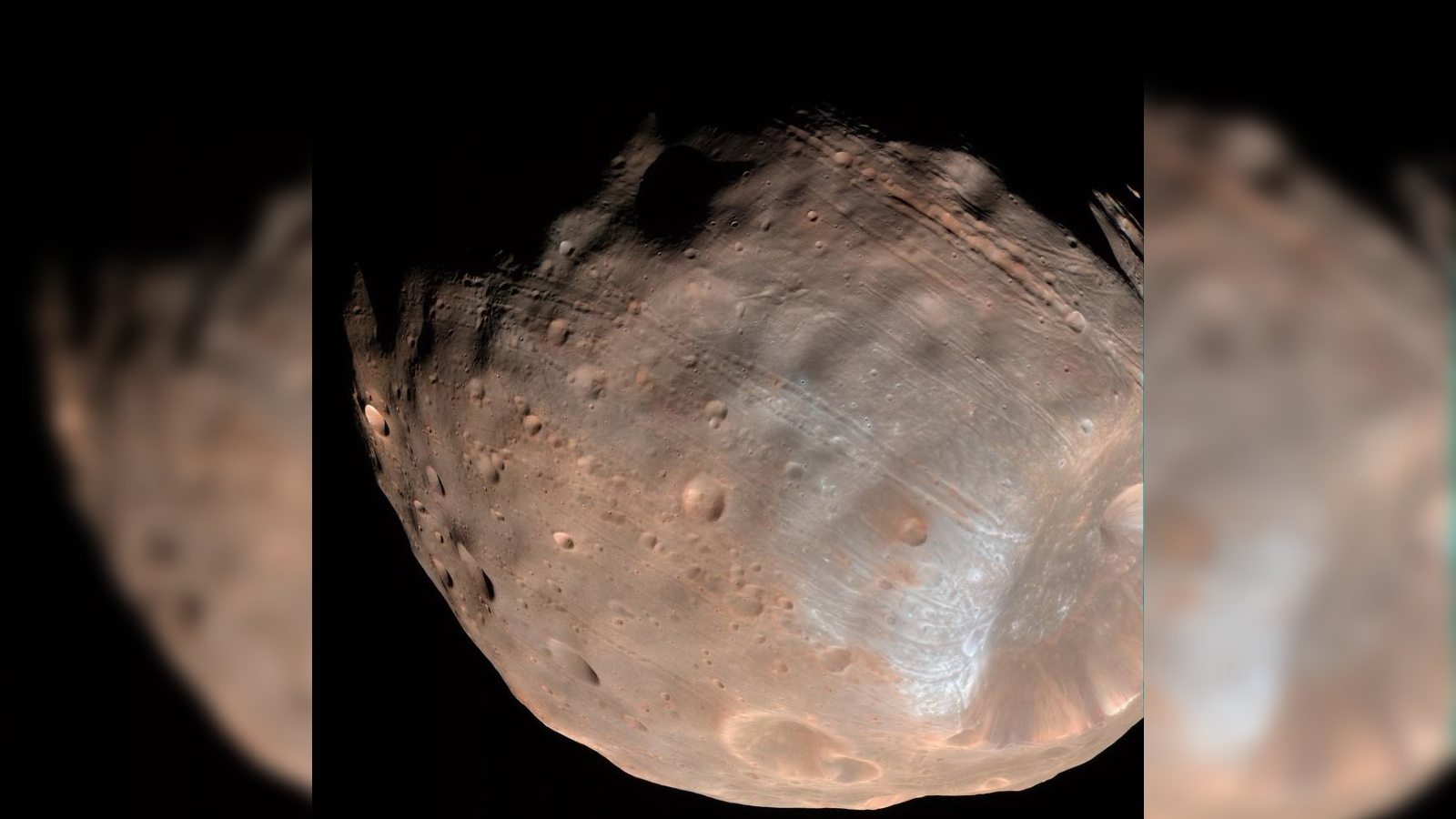A new study shows that Phobos is being ripped apart by the Red Planet.
The grooves on Phobos that were thought to be scars from an asteroid impact are actually dust-filled canyons that are growing larger as the moon gets stretched out.
According to NASA, Phobos is circling Mars at a distance of 3,728 miles (6000 km) and completing a full rotation around the Red Planet three times a day. Earth's moon is around 3,450 km wide and takes around 27 days to complete.
There is a brand-new mini'moon' in the outer solar system.
The tiny satellite is trapped in a death spiral and is slowly falling towards the Martian surface at a rate of 6 feet per 100 years.
There is a stripey surface to Phobos. The moon is covered by parallel grooves. The most widely accepted theory is that the striations formed when an asteroid slammed into Phobos at some point in the past.
A new study suggests that the grooves may be the result of the moon being ripped apart by Mars' intense gravity.
As Phobos gets closer to a larger body, such as Mars, the smaller will begin to stretch out towards the larger body. It is called tidal force.
As Phobos gets closer to the Martian surface, the tidal force on the moon is predicted to increase, until it surpasses the gravity holding the satellite together. According to the study, at that point Phobos will be torn apart and the debris will form a ring around the planet.
The moon's fluffiness makes it too soft for cracks to form, so the theory that Phobos' tiger stripes were caused by tidal forces has been largely dismissed.

The idea of the moon's fluffy surface resting atop a sub-layer was tested in the new study. The simulation shows that a buried hard shell could have created deep canyons that the surface dust could fall into.
The researchers said that they found that the tidal strain could create parallel fissures with regular spacing.
Phobos will hit Mars in 40 million years. If the moon is torn apart by tidal forces, then the satellite will be destroyed before then.
The Japanese Space Agency, JAXA, will launch a new mission, known as Martian Moons eXploration (MMX), in order to land a spaceship on two different moons. What's going on with Phobos should be revealed by the samples returned in 2029